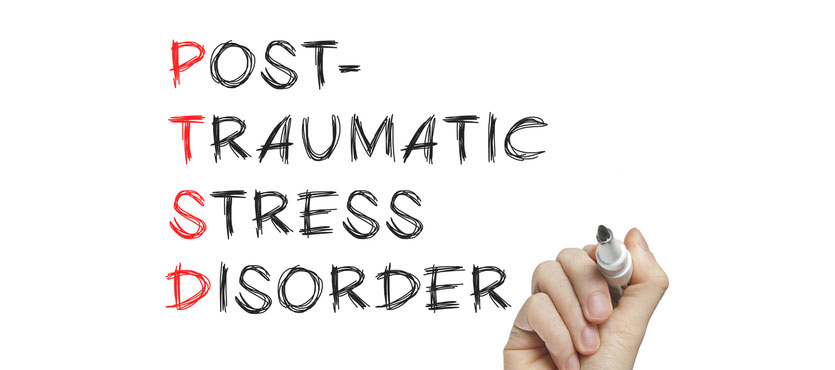Adding onto recent research which indicates that Post Traumatic Stress Disorder is a physical condition and not a “disorder,” scientists at Stellenbosch University have isolated a gut bacteria linked to development of the disease.
On the surface, obscure gastrointestinal microbes seem to have little if anything to do with a brain injury, but researchers are convinced that gut microbiome is just as important as living conditions, genetics, and childhood experiences in terms of PTSD risk factors. However, in addition to fighting infections and metabolizing food, these microbes also secrete neurotransmitters and hormones which influence key brain activities. As stress hormones eat away at the intestinal wall, the inflammation affects the makeup of these microbes. Specifically, patients with PTSD had significantly lower levels of Lentisphaerae, Actinobacteria, and Verrucomicrobia in their guts. Scientists have long wondered why many PTSD patients also have digestive problems, and now they think they know the answer. “We therefore hypothesise that the low levels of those three bacteria may have resulted in immune dysregulation and heightened levels of inflammation in individuals with PTSD, which may have contributed to their disease symptoms,” commented lead author Dr. Stefanie Malan-Muller.
“Factors influencing susceptibility and resilience to developing PTSD are not yet fully understood, and identifying and understanding all these contributing factors could in future contribute to better treatments,” she added.
The Roots of PTSD
Many people once assumed that PTSD began in World War I, largely because armies used TNT as opposed to picric acid (a chemical similar to that found in fireworks) in their ordnance. Historians are now uncovering evidence of PTSD as far back as the American Civil War, which took place about 50 years earlier.
This evidence lay dormant for decades, largely because the Victorian notions of courage and manliness were even stronger back then. Furthermore, since the war was captured only in still photographs and paintings, most people think of Civil War soldiers as heroic and stoic.
Stories like that of 25-year-old Michigander John Hildt, who lost an arm in Virginia in the summer of 1862, are changing minds. Although he survived his physical wound, doctors transferred Corporal Hildt, who suffered from “acute mania,” to the Government Hospital for the Insane in Washington.
During his almost 50 years at this facility, he bounced back and forth between isolation and depression to anxiety outbursts so severe that he assaulted fellow inmates. Cpl. Hildt died in the hospital in 1911.
Soldiers who suffered from PTSD-like symptoms were often diagnosed with either “nostalgia” or “camp disease.” Doctors blamed these conditions on inactivity, and often recommended either shaming the victims or “the excitement of an active campaign,” both of which (especially the latter) probably made the problem worse.
Historian Lesley Gordon believes that the 16th Connecticut is a microcosm of many other regiments. Most of these very young soldiers barely knew how to fire their rifles when they were rushed into combat at Antietam, the war’s bloodiest day. The unit suffered 25% casualties in only a few minutes. Subsequently, most of the survivors were captured and sent to Andersonville, where about a third died of starvation and disease. A tormented Wallace Woodford returned home but died in his sleep at age 22. His tombstone reads “8 months a sufferer in Rebel prison; He came home to die.”
PTSD: A Modern View
The Victorian myths so prevalent in the Civil War still exist today, even though researchers understand that combat stress erodes the amygdala, so it is a physical illness and not a processing disorder.
Many people describe the interplay between the amygdala and prefrontal cortex as like a rider and a wild horse. Without an experienced rider, the horse runs rampant, and without the amygdala’s logic and reasoning capabilities, the emotional prefrontal cortex dominates a victim’s daily life with symptoms like:
- Behavioral: Many PTSD patients are constantly agitated or openly hostile, punctuated by instances of hypervigilance. Other behavioral symptoms include social isolation and self-destructive acts.
- Psychological: On a related note, severe anxiety, deep mistrust, and crippling fear, along with accompanying flashbacks.
- Mood: Many PTSD victims have no interest whatsoever in previously enjoyable or engaging activities. Instead, they find themselves increasingly withdrawn, mired in by feelings of loneliness and guilt.
These and other injury symptoms make it almost impossible to perform everyday activities and meet routine obligations at work or elsewhere.
Injury Compensation
Because PTSD is a physical injury, and because its symptoms are so severe, benefits are available under the Defense Base Act. To qualify, the victim must have been an overseas private contractor in a war zone at the time the brain trauma occurred.
To ease the financial stress that brain injuries like PTSD cause, most victims receive two-thirds of their average weekly wage as they obtain physical therapy or other treatments. These services usually come at no cost to victims, because DBA insurance pays for medical bills as well.
To learn more about other qualifying conditions, contact Barnett, Lerner, Karsen & Frankel PA.

